If you are making (or maintaining) a sourdough starter, you likely have a lot of sourdough discard. You can either throw it away (literally, discard it), or you can use it in sourdough discard recipes like these Sourdough Discard Bagels. Homemade bagels are delicious and surprisingly easy to make - these might just become a staple recipe for you!
If you're looking for a version of this recipe that does not use sourdough, try these Homemade Everything Bagels. And if you'd like a high-protein version of this recipe, try these Sourdough Discard Protein Bagels!
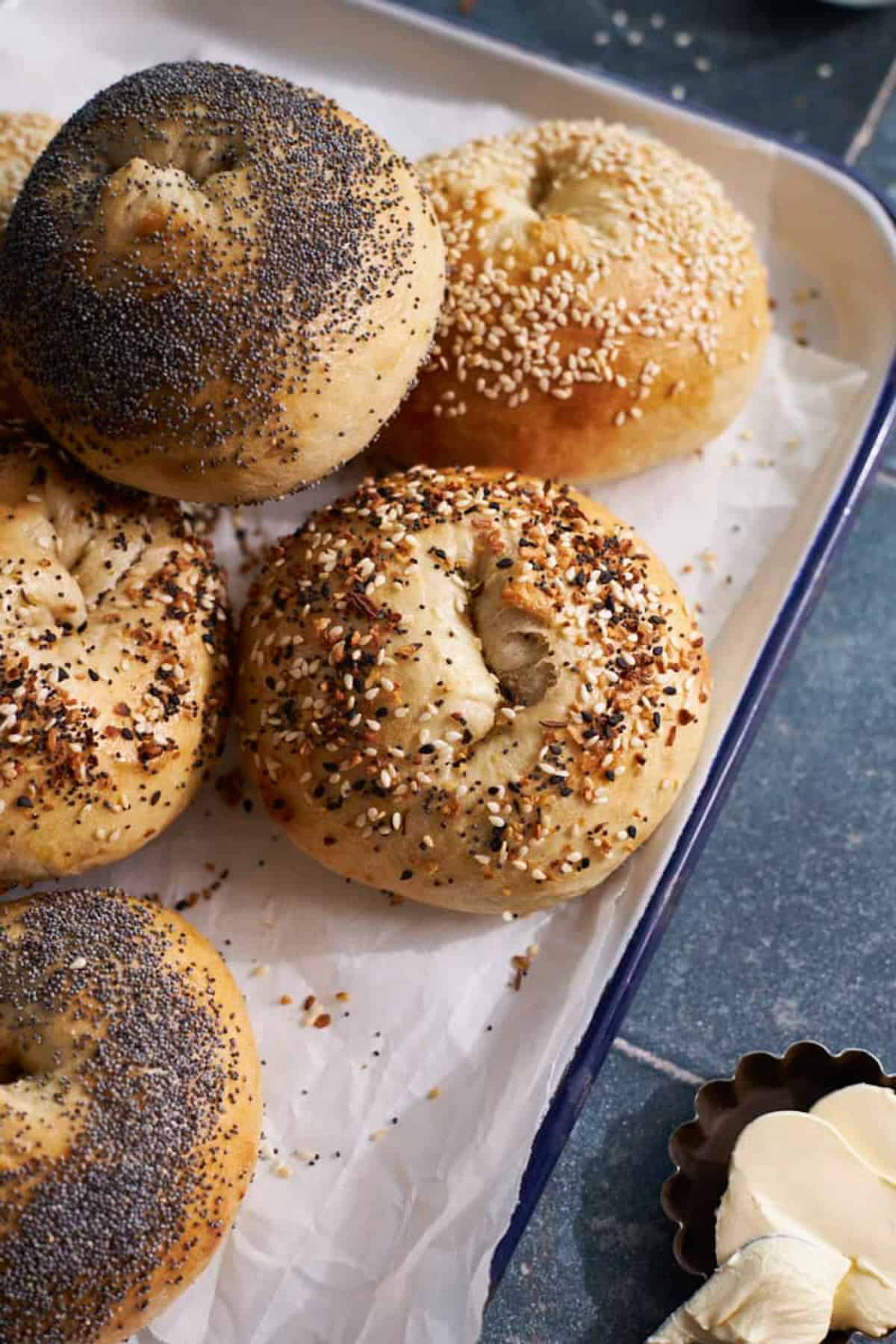
I make these bagels multiple times per week and they are gone within minutes of coming out of the oven!
- Kennedy
Why you'll love this recipe
- Easy weekend bake! Once you make homemade bagels once, you'll realize how easy they are you may never run out to the store for bagels on the weekend again!
- Try these Sourdough Discard Blueberry Bagels and Sourdough Discard Cinnamon Raisin Bagels, too!
- This is a same-day recipe with one rise and you'll have fresh bagels to enjoy in just a few hours.
- You can also make these bagels with active sourdough starter.
- Less than 30 minutes of prep! Most of the time making this recipe is rise time; there is actually less than 30 minutes of prep to make these bagels.
- They freeze well so it's great to make a batch and then freeze the bagels to enjoy throughout the week.
- You can modify the toppings to suit your taste! Try sesame seeds, poppy seeds, everything bagel seasoning, or flaky sea salt! In a savory mood? Try these Sourdough Discard Rosemary Salt Bagels, too!
Jump to:
Ingredients
As long as you have sourdough discard, the other ingredients are pantry staples you likely already have at home.

- Sourdough discard: The sourdough discard should be unfed and at room temperature for this recipe. This recipe is designed for discard with a 1:1 ratio (when you feed your starter, it's with 1 part flour and 1 part water). If your starter uses a different ratio, you may need to adjust some of the ingredients in this recipe.
- Learn more about making a homemade sourdough starter.
- Toppings: These are optional, but you can top your bagel with anything you like. Sesame seeds, poppy seeds, and everything bagel seasoning are all great options!
See full recipe below for detailed instructions.
Substitutions & Variations
This is a very adaptable recipe and below are a few easy substitutions and variations you can try.
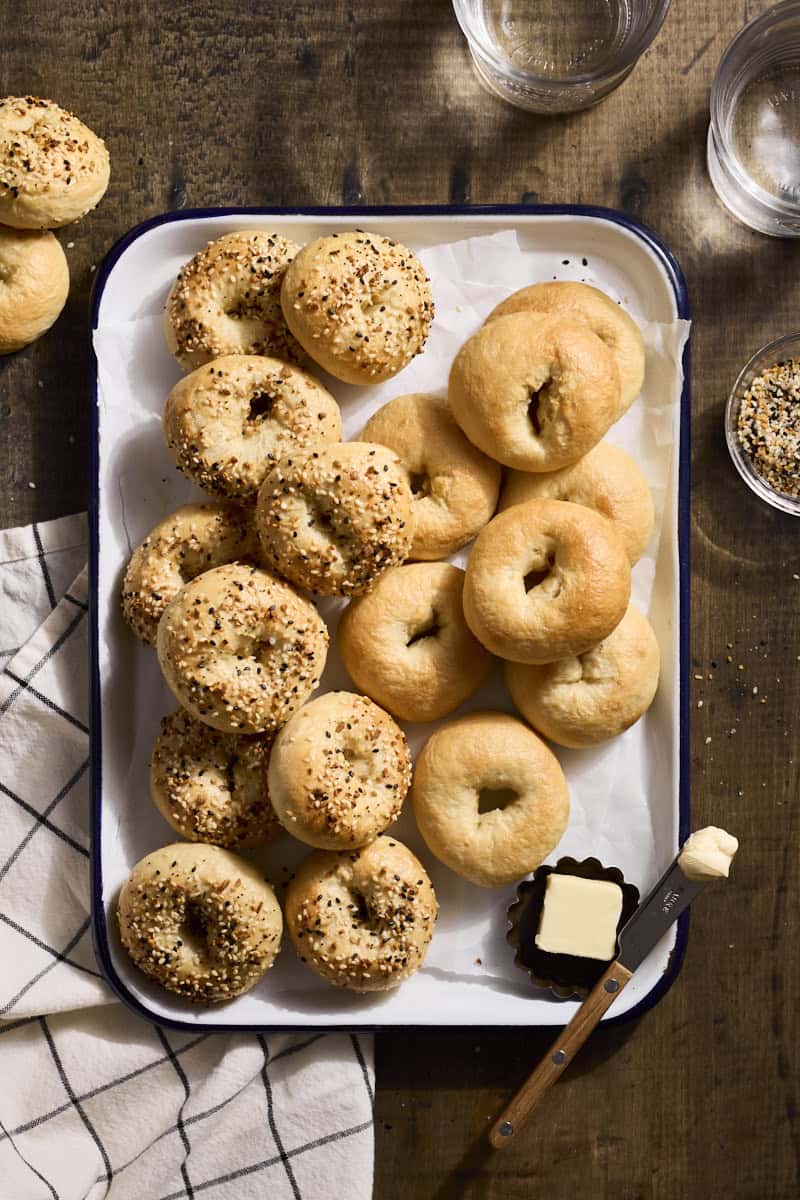
- Use active sourdough starter: If you'd like to use active sourdough starter to make sourdough bagels, you can! To do so, omit the yeast and replace the sourdough discard with active sourdough starter (200g). You will also need to adjust the rise times.
- Make mini bagels: Perfect for little hands or a cute appetizer or snack, you can make these into mini bagels! To do so, divide the dough into 24 equal-sized pieces (instead of only 8 full-size bagels). For me, that was about 46g per bagel. Continue with the directions as written.
- Change up the toppings: You can easily make these bagels different by changing your choice of toppings. These bagels are great with sesame seeds, poppy seeds, everything bagel seasoning, flaky sea salt, and more!
- If you're in the mood for a Fall flavor, try these Sourdough Discard Pumpkin Bagels.
- Egg Substitute: If you're not baking with eggs, you can use water or melted butter in place of the egg wash. The purpose is to help the toppings stick to the bagel, so this is easy to replace!
I have not tested this recipe with other variations, but if you do, let us know how it turns out in the comments! I always love to hear how you're adapting these recipes and use those as ideas for future recipes as well!
How to Make Sourdough Discard Bagels
These Sourdough Discard Bagels only need one rise, and the recipe is pretty forgiving. The full recipe with detailed directions is at the bottom of this post.
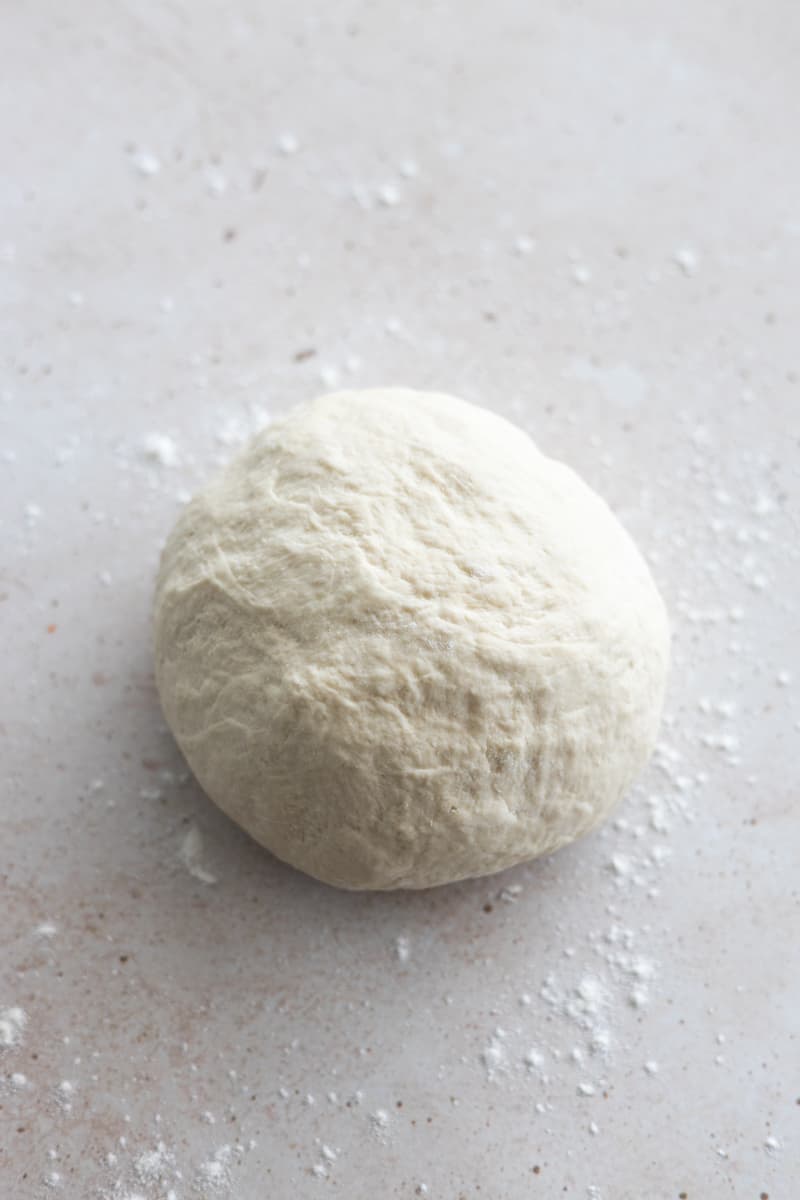
- Step 1: Combine all ingredients in a stand mixer fitted with a dough hook. Mix until a smooth ball forms, kneading on a work surface if needed. Transfer to an oiled bowl and cover with plastic wrap to rise for 90 minutes.
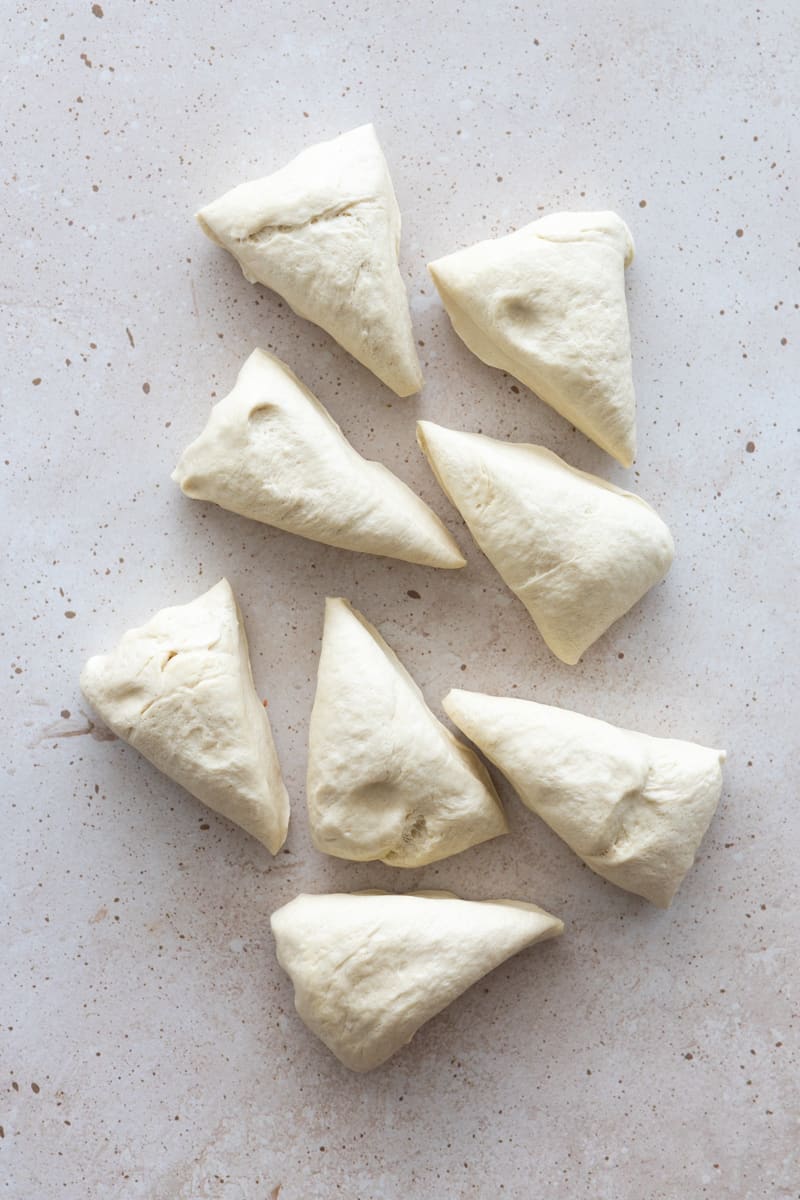
- Step 2: After the dough rises, turn it out onto a flat surface and divide it into 8-10 equal pieces. 8 pieces will give you larger bagels compared to 10 pieces.
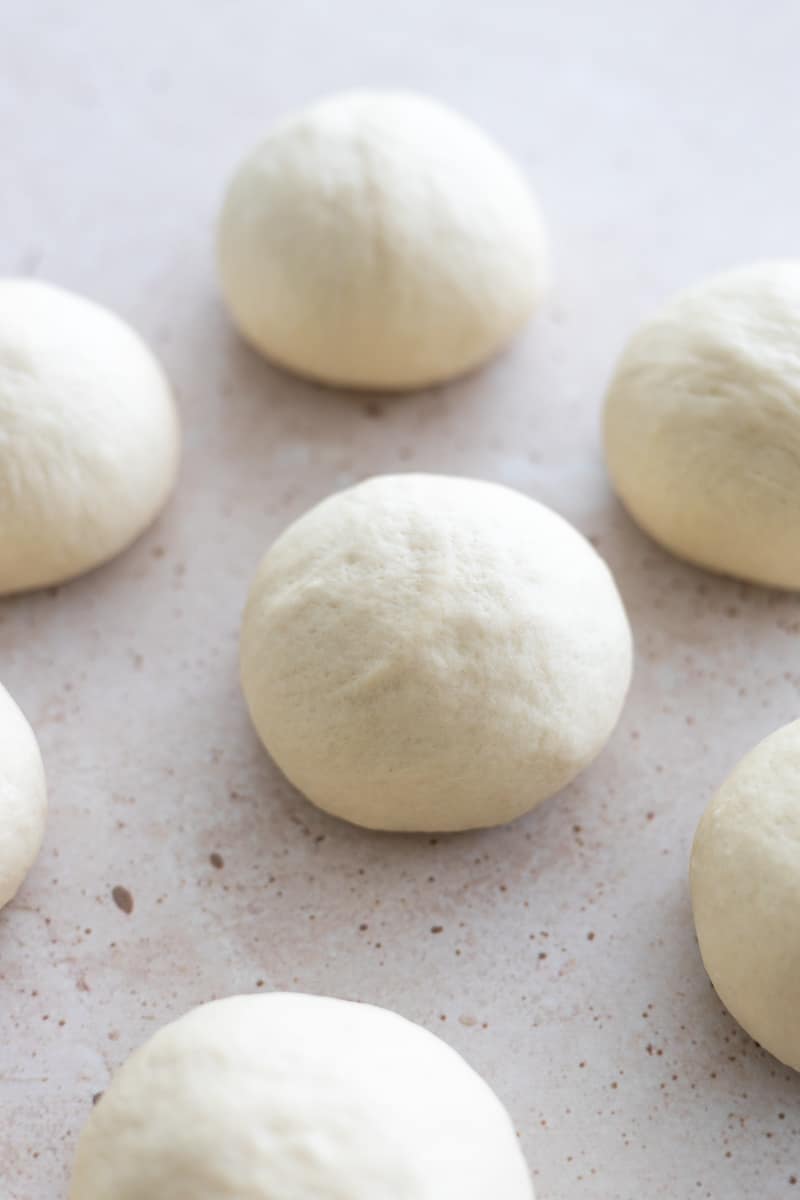
- Step 3: Roll each piece into a ball using the base of your palm to create friction and form the seal of the dough (this will be the bottom, "ugly" side of the bagel).
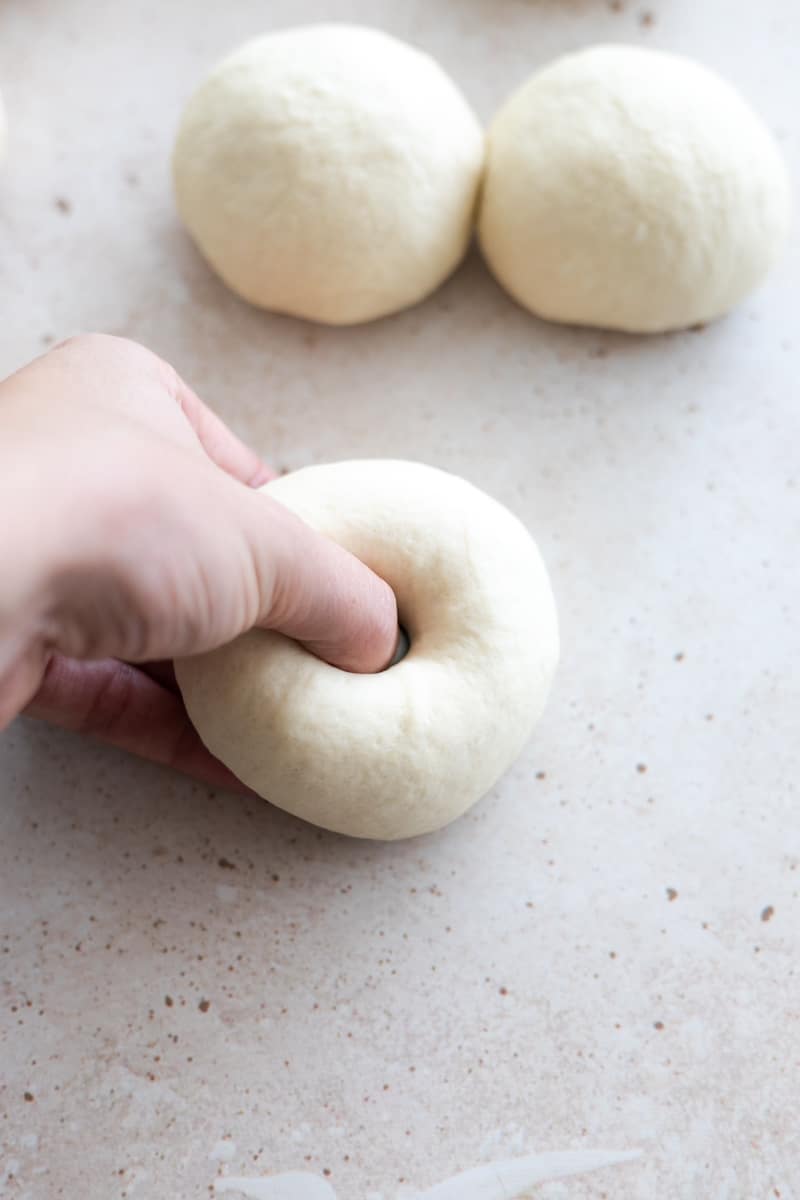
- Step 4: Push your thumb through the center of each ball and stretch the hole to form your bagel shape. Cover the bagels with a clean kitchen towel and let rest for 20 minutes.
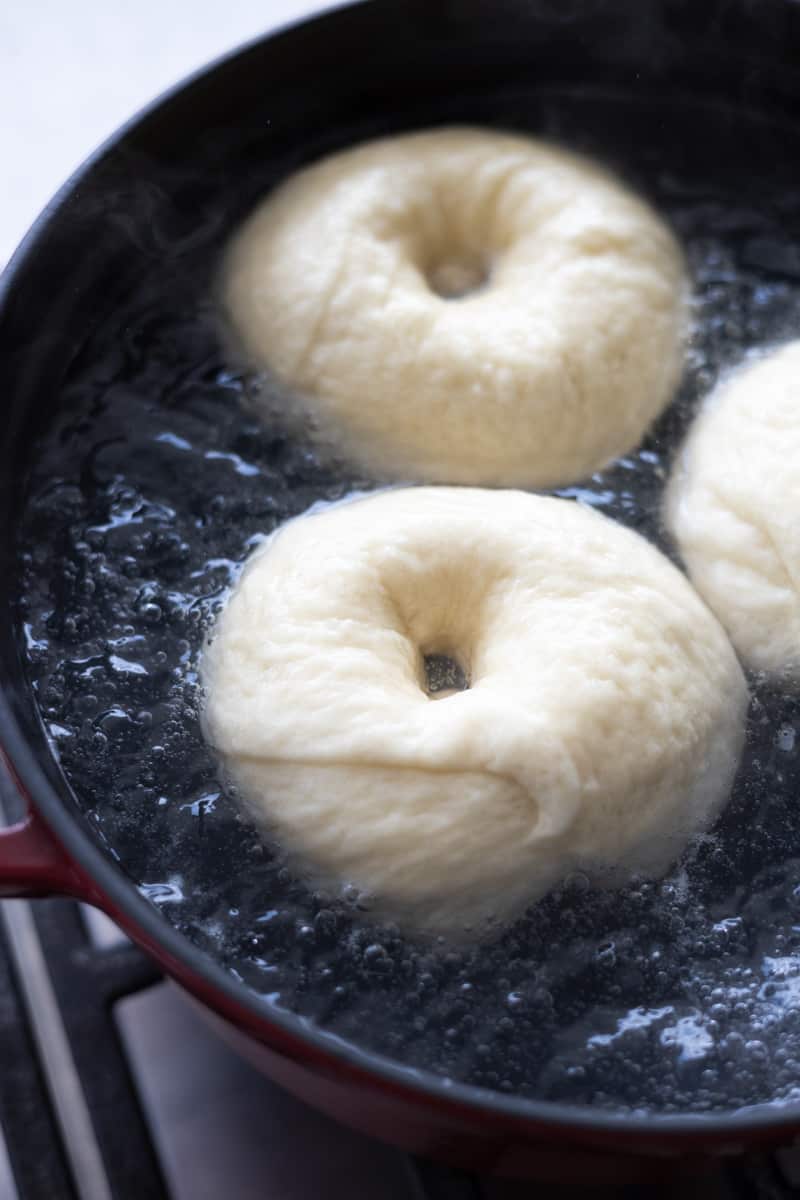
- Step 5: Boil each bagel for 15-30 seconds on each side. Use a slotted spoon to transfer the bagels to the prepared baking sheet.
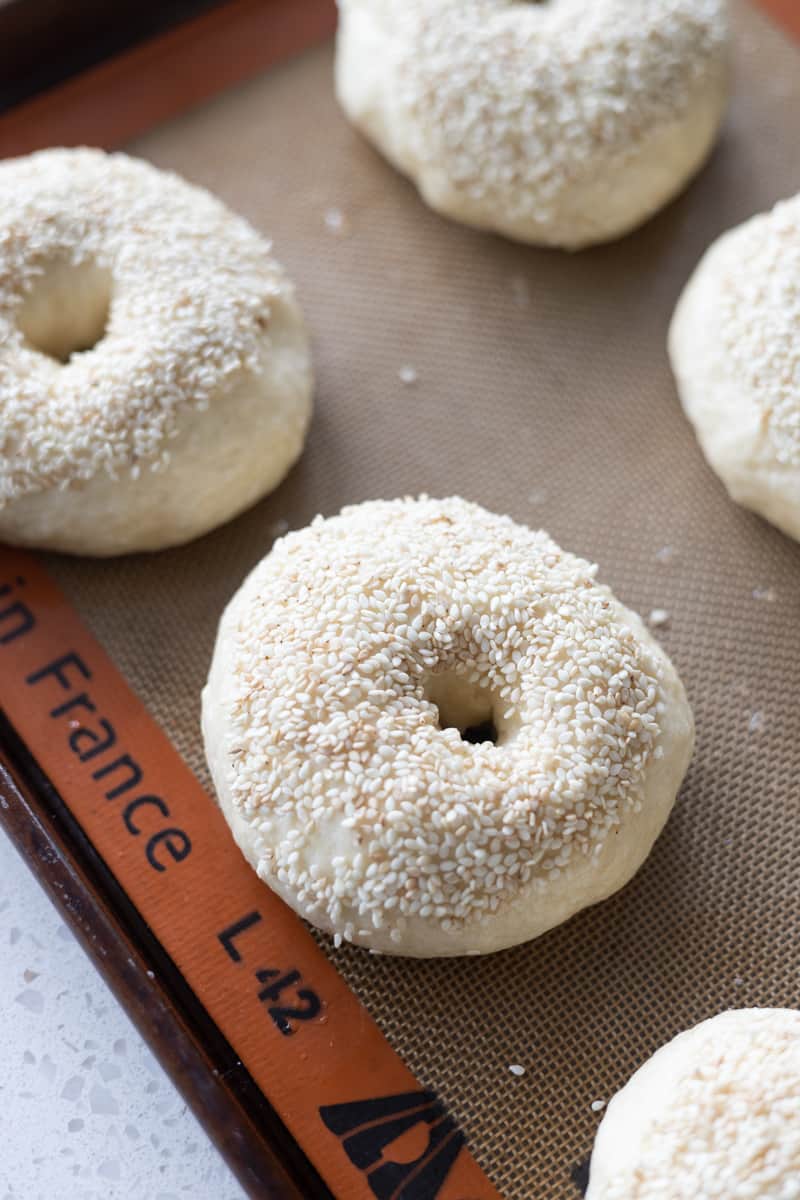
- Step 6: Brush each bagel with egg wash, then dip or sprinkle with your desired toppings (optional).
- Step 7: Bake the bagels until they are golden brown. Let cool, then slice and serve!
Expert Baking Tips
- Make sure to knead the dough long enough. The dough should be completely smooth, not shaggy.
- Once kneaded, the dough will be fairly sturdy and should not be sticky as it goes into the first rise.
- Every sourdough starter (and therefore every sourdough discard) is different. You may need to add some additional flour or water to reach the desired dough consistency. If your dough seems too dry, add more water, 1 Tablespoon at a time. If your dough seems too sticky (wet), add more flour, 1 Tablespoon at a time.
- Make your bagels more or less chewy to suit your taste by boiling them for a shorter or longer amount of time. Boiling for less time will create a less chewy crust. Boiling for longer will create a chewier crust. I like to boil mine for about 30 seconds on each side for a thinner crust.
- Change up the toppings! This is a great base bagel recipe that you can top with your favorite toppings like everything bagel seasoning, poppy seeds, sesame seeds, cinnamon sugar and more!
- Looking for more sourdough discard breakfast recipes? Try these Sourdough Discard Cinnamon Rolls and Sourdough Discard Scones.

What is "passing the float test"?
When you put your bagels in the boiling water, they should float (which is called "passing the float test." This is the same process you would use if you were making Sourdough Discard Pretzels.
I recommend doing this with one test bagel first, so you can adjust if needed. If the bagel floats, it has passed the float test! And if the bagel does not float, then they're not yet ready to boil and need to take a bit more time to rise.
If the bagels float: This indicates that the dough has risen enough and the bagels will be light and airy once they're baked. Go ahead and boil and bake the bagels as directed!
- A bagel is considered "passing the float test" if it floats right away, or even if it sinks to the bottom, then slowly floats back up to the top. Both of these options pass!
If the bagels do not float: This indicates that the dough is too dense. If you boil and bake them now, your final bagels will be too dense and chewy. Cover the unboiled bagels with a clean kitchen towel again, and let sit for 10 more minutes to let the dough rise more. Then, try again.
Storage
Room Temperature Storage: Homemade bagels are best fresh, of course! Once cooled, they can be stored in a sealed plastic bag at room temperature for up to three days. Reheat the bagels in the microwave for about 30 seconds to make them warm and soft again.
Freezer Storage: These bagels freeze well! Once fully cooled, transfer the bagels to a freezer-safe plastic bag or container and freeze for up to 3 months. I like to freeze them in individual plastic bags so I can reheat just one bagel whenever I like. Reheat frozen bagels in the microwave for about 60 seconds until warm and soft again.
More Sourdough Discard Bagel Recipes
If you tried these Sourdough Discard Bagels or any other recipe on my website, please leave a ⭐ star rating and let me know how it went in the comments below. I'd love to hear from you! Happy Baking!
Recipe FAQs
Yes, you can! To do so, omit the yeast and replace the sourdough discard with active sourdough starter (200g). You will also need to adjust the rise times.
Sourdough discard is what you have leftover after feeding your sourdough starter. You can either make your own sourdough starter (be prepared, this is a process that can take 2+ weeks), buy a sourdough starter, or get one from a friend who already has a starter!
You can use any toppings that sound good to you! Sesame seeds, poppy seeds, and other seed mixes (like everything bagel seasoning) all work well. You can also never go wrong with flaky sea salt!
Sourdough Discard Bagels are best fresh within 1-2 days. If you'd like to store longer, I recommend freezing!
Once fully cooled, transfer the bagels to a freezer-safe plastic bag or container and freeze for up to 3 months. I like to freeze them in individual plastic bags so I can reheat just one bagel whenever I like. Reheat frozen bagels in the microwave for about 60 seconds until warm and soft again.
There are a few things that could cause this. First, make sure to shake off the excess water after boiling the bagels. Excess water can make the bagels sticky.
If you have excess egg wash pooling beneath the bagels, this can also make them sticky. You only need to use enough egg wash for the toppings to stick to the bagels.
Check the type of parchment paper you're using. Some are not designed for higher baking temperatures (and we're baking at a high temperature for this recipe!). I recommend using this parchment paper or a silicone baking mat (such as a Silpat mat).
Lastly, some ovens (like mine) heat unevenly and are hotter on the top or the bottom. Make sure to flip and rotate your pans (top to bottom and front to back) while baking so the bagels on each pan bake evenly!

Sourdough Discard Bagels
Ingredients
For the Bagels
- 4 cups bread flour
- 3 Tablespoons granulated sugar divided
- 1 teaspoon instant yeast
- 2 teaspoons kosher salt
- 200 grams (about ¾ cup) sourdough discard unfed, at room temperature
- 1 ¼ cups warm water
For Topping
- 1 egg white for egg wash
- 1 Tablespoon water for egg wash
- Toppings (optional)
Instructions
- Combine flour, 1 Tablespoon granulated sugar, instant yeast and salt in the bowl of a stand mixer fitted with the dough hook attachment. Mix to combine. On low speed, add the sourdough discard and water until combined. Increase speed to medium and knead for 4-5 minutes until a smooth ball forms*. This will be a fairly sturdy dough and should not be sticky. You may need to add more water or more flour (1 Tablespoon at a time), depending on your sourdough discard, to reach the right dough consistency.
- Grease a large bowl, transfer the dough to the bowl, and cover with plastic wrap. Let the dough rise for 90 minutes or until doubled in size.
- Turn the dough out onto a smooth surface and divide into 8-10 equal pieces. 8 pieces will give you 8 large bagels; 10 pieces will give you 10 smaller bagels. Roll each piece in your palm to form a smooth ball, then use your thumb to press through the center of each ball, stretching the hole to form your bagel. Cover the bagels with a clean kitchen towel and let rest for 20 minutes while you prepare the next step.
- Preheat oven to 425°F. Prepare 2 baking sheets lined with parchment paper or a silicone baking mat and set aside. Bring a pot with 2 quarts of water and 2 Tablespoons granulated sugar to boil.
- Place your bagels in the boiling water for 15-30 seconds on each side**. The bagels should float (if not, see notes below). You can likely fit 2-3 bagels in the pot at a time, just make sure there is enough room for them to float openly as they will expand. Remove from the boiling water using a slotted spoon and transfer to the prepared baking sheets. If needed, you can reshape the bagels a little after they've cooled.
- Whisk together the egg white 1 Tablespoon water to create the egg wash. Lightly brush the bagels with egg wash, then sprinkle with your chosen toppings, if using (such as sesame seeds, poppy seeds, or everything bagel seasoning). You can also dip the bagels into the toppings if you prefer.
- Bake for 18-22 minutes or until golden brown. Let cool fully before slicing and serving.






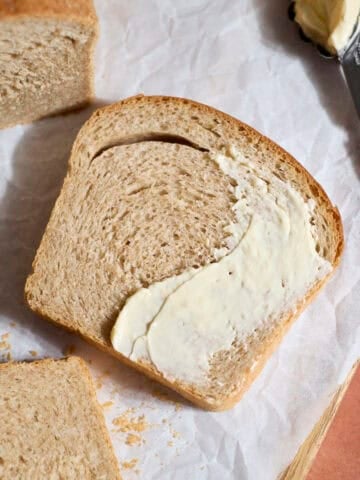
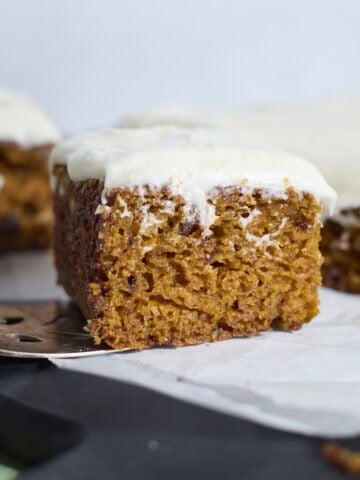

Lauren Roberts says
what if you wanted to make blueberry bagels? I’m making these Thursday!
Jessica Vogl says
I have a recipe for Sourdough Discard Blueberry Bagels too! https://www.thisjess.com/blueberry-bagels/
Melanie Thompson says
I am looking to try this tonight. I am curious - is it possible to freeze the bagels after boiling, then defrost and bake? I saw that they could be frozen after baking. Thanks for sharing this recipe!
Jessica Vogl says
I’d recommend freezing after baking! I haven’t tried freezing before baking.
Colleen says
I used to work in a bagel shop where all bagels were made and baked fresh in-store. Freeze the dough after shaping but before baking if you absolutely must freeze them. I’d definitely recommend just baking them though.
Nicole says
Outstanding! 10/10 would recommend. I am new to baking with sourdough. This recipe was easy to follow and came out perfection. Thanks!!!
Stephanie says
When do you add the other two tablespoons of sugar or am I missing something? I think the first time I made this I put in all three tablespoons in the beginning instead of just the one like it says in the directions and it still came out fine
Jessica Vogl says
That's ok and glad it worked out! There is 1 Tbsp sugar in the dough, and then 2 Tbsp sugar mixed with the water for boiling the bagels.
Amani Hughes says
I made these today & not only was I SHOCKED by how fast it took to make, it was very easy to follow as well. I will definetly be making again!
Jessica Vogl says
Soooo good! Love to hear it!
Vikki says
Excited to try this! If I don’t have a stand mixer, can I hand mix this? Will that impact the recipe?
Jessica Vogl says
Yes, that will work and won’t impact the recipe!
Gayla says
I haven’t made your recipe yet but I am about to. I don’t keep fast rising yeast on hand anymore, just the regular. I should be able to substitute the yeast and just watch the dough once it doubles correct?
Jessica Vogl says
You’ll need to bloom active dry yeast on the water for at least 5 minutes until foamy before continuing with the recipe. But it should work!
Jesse says
Can you sub all purpose flour for the bread flour?
Jessica Vogl says
Yes! The bagels will be a slightly different texture (AP flour will make softer, chewier bagels, and bread flour will make more crusty bagels) but it will work!
Gabriells says
Literally the best bagel recipe I have EVER tried. I boiled for 60 seconds, omitted the egg wash, and used everything seasoning as soon as they came out of the water. I will ONLY be using this recipe moving forward
Jessica Vogl says
Yayyyyy! So glad to hear it! Thank you so much for sharing and for trying this recipe!
Skylar T says
Is there a way to do this recipe in the bread machine? On the dough setting?
Jessica Vogl says
I haven't tried it, so unfortunately I'm not sure!
Michelle says
Loved this recipe! My first time making bagels and they turned out great. My kids loved them too- "best bagels ever!"
Jessica Vogl says
Amazing! So glad you liked them!
Gabriella says
Just made it tonight as my first recipe working with my sourdough starter and was a success! Thanks so much for the recipe! ❤️
Jessica Vogl says
Amazing!! So glad you liked it!
Trystan Cameron says
Okay so for the instant yeast…. Do I just put it in the flour dry or do I add the water and make the instant yeast first and then add it to the flour. I’m such a noob!
Jessica Vogl says
Just mix it in dry with the flour! It's instant yeast, so you don't need to mix it with water first.
Erin Rhodes says
Great recipe, huge hit with the family!
Jessica Vogl says
Amazing, so great to hear!
Katie Rich says
Is there a way to use your recipe without the yeast?
Jessica Vogl says
Hi Katie! Unfortunately, that is not something I've tried, so I really can't say. I would imagine it can be done, but would have a much longer rise time (similar to when you're making sourdough bread).